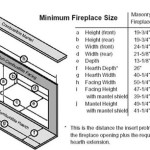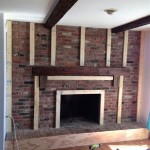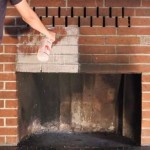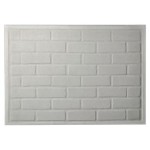Wood To Gas Fireplace Conversion Kit: A Comprehensive Guide
Converting a traditional wood-burning fireplace to a gas-fueled system is a popular home improvement project, offering convenience and efficiency. A wood to gas fireplace conversion kit facilitates this process, providing the necessary components and instructions for a relatively straightforward alteration. This article explores the components, benefits, selection criteria, installation process, safety considerations, and maintenance aspects related to wood to gas fireplace conversion kits.
Understanding the Components of a Conversion Kit
A typical wood to gas fireplace conversion kit comprises several key components that are essential for safe and functional operation. These components ensure that the gas is delivered, ignited, and vented properly.
Firstly, the *gas burner* is the heart of the system. It is designed to distribute the gas evenly and create a realistic flame pattern. Burners come in various shapes and sizes, including linear, log, and decorative designs. The burner material, usually stainless steel or cast iron, dictates its durability and resistance to corrosion from combustion byproducts.
Secondly, the *gas valve* controls the flow of gas to the burner. It is a critical safety component, regulating the gas supply based on user input and safety mechanisms. Gas valves can be manual, requiring manual adjustment, or automatic, featuring electronic ignition and remote control capabilities. The choice of valve depends on the desired level of control and convenience.
Thirdly, the *igniter* starts the combustion process. Modern kits typically use electronic igniters, which create a spark to ignite the gas. Older kits may employ a pilot light, a small, constantly burning flame that ignites the main burner. Electronic igniters are generally more efficient and safer, eliminating the need for a standing pilot light.
Fourthly, the *oxygen depletion sensor (ODS)*, also known as a pilot light sensor, is a safety device that monitors the oxygen level in the room. If the oxygen level drops below a certain threshold, the ODS automatically shuts off the gas supply, preventing carbon monoxide poisoning. This is a crucial safety feature, particularly in enclosed spaces.
Fifthly, the *decorative media*, such as ceramic logs, glass beads, or lava rocks, enhance the aesthetic appeal of the gas fireplace. Ceramic logs are designed to mimic the appearance of real wood, providing a realistic flame effect. Glass beads and lava rocks offer a more modern and contemporary look. The choice of decorative media is largely based on personal preference.
Sixthly, the *connector fittings and tubing* ensure a secure and leak-proof connection between the gas supply line and the components of the conversion kit. These fittings are typically made of brass or copper and are designed to withstand the pressure of the gas supply. Proper installation of these connectors is paramount to prevent gas leaks.
Finally, the *control system*, which may include a remote control, wall switch, or thermostat, allows the user to adjust the flame height, temperature, and other settings. Sophisticated control systems may offer programmable features, such as timers and automatic shut-off functions.
Benefits of Converting to a Gas Fireplace
Converting a wood-burning fireplace to gas offers several advantages, making it a popular choice for homeowners. These benefits range from enhanced convenience and efficiency to environmental considerations.
One significant benefit is *convenience*. Gas fireplaces require minimal effort to operate. With the simple flip of a switch or press of a button, the fireplace ignites, providing instant warmth and ambiance. There is no need to gather, chop, and stack wood, or to constantly tend to the fire. This makes gas fireplaces ideal for individuals with busy lifestyles or those who find wood-burning fireplaces physically demanding.
Another key advantage is *increased efficiency*. Gas fireplaces are generally more efficient than wood-burning fireplaces, converting a higher percentage of fuel into usable heat. This translates to lower heating costs and reduced energy consumption. Modern gas fireplaces often incorporate features such as thermostatic controls and programmable timers, further enhancing their efficiency.
Furthermore, gas fireplaces offer *improved air quality*. Wood-burning fireplaces release smoke, particulate matter, and other pollutants into the air, contributing to indoor and outdoor air pollution. Gas fireplaces, on the other hand, burn cleaner, producing significantly fewer emissions. This makes them a more environmentally friendly option, particularly in areas with air quality concerns.
Also, *enhanced safety* is a notable benefit. Gas fireplaces are designed with multiple safety features, such as oxygen depletion sensors and automatic shut-off valves, which prevent gas leaks and carbon monoxide poisoning. These features provide a higher level of safety compared to wood-burning fireplaces, which can pose risks of chimney fires and smoke inhalation.
Finally, *ease of maintenance* is a compelling factor. Gas fireplaces require minimal maintenance compared to wood-burning fireplaces. There is no need to clean up ashes, remove creosote buildup, or schedule chimney sweeps as frequently. Regular maintenance typically involves inspecting the burner, cleaning the glass, and checking the gas connections.
Key Considerations When Selecting a Conversion Kit
Choosing the right wood to gas fireplace conversion kit involves careful consideration of several factors to ensure compatibility, safety, and desired performance. Ignoring these considerations can lead to unsatisfactory results or even hazardous situations.
Firstly, *fireplace size and type* are critical factors. The conversion kit must be appropriately sized for the existing fireplace opening. Kits are typically rated based on the BTU (British Thermal Unit) output, which should match the heating requirements of the space. Different types of fireplaces, such as masonry fireplaces and zero-clearance fireplaces, may require specific types of conversion kits.
Secondly, *gas type* is a fundamental consideration. Conversion kits are designed to operate on either natural gas (NG) or propane (LP). It is essential to select a kit that is compatible with the type of gas available at the property. Using the wrong type of gas can result in improper combustion, reduced efficiency, and safety hazards.
Thirdly, *venting requirements* must be addressed. Gas fireplaces require proper venting to exhaust combustion byproducts safely. Depending on the type of fireplace and the local building codes, venting options may include direct vent, B-vent, or vent-free systems. It is crucial to ensure that the conversion kit is compatible with the existing venting system or to install a new venting system that meets the required specifications.
Fourthly, *ignition type* should be considered based on personal preference and convenience. Electronic ignition systems offer push-button or remote control operation, while pilot light systems require manual lighting and consume a small amount of gas continuously. Electronic ignition systems are generally more efficient and safer, but pilot light systems may be preferred in areas with frequent power outages.
Fifthly, *safety features* are paramount. The conversion kit should include essential safety devices, such as an oxygen depletion sensor (ODS) and a gas shut-off valve. These devices protect against carbon monoxide poisoning and gas leaks. It is advisable to choose a kit that is certified by a reputable testing agency, such as CSA or UL, to ensure that it meets stringent safety standards.
Sixthly, *aesthetic considerations* play a significant role. The decorative media, such as ceramic logs or glass beads, should complement the style of the room and provide a realistic or visually appealing flame effect. The burner design should also be aesthetically pleasing and create a natural-looking flame pattern.
Finally, *budget* is a practical consideration. Conversion kits vary in price depending on their features, quality, and brand. It is essential to set a realistic budget and compare different kits to find the best value for the money. In addition to the cost of the kit, it is important to factor in the cost of installation, venting, and any necessary modifications to the fireplace.
Careful evaluation of these factors will help ensure that the selected wood to gas fireplace conversion kit is safe, efficient, and aesthetically pleasing, providing years of reliable performance.
The installation process, typically involving connecting the gas line, installing the burner assembly, and testing for leaks, requires adherence to manufacturer instructions and local building codes. Proper venting is critical for safe operation, directing exhaust gases away from the living space. Regular inspections and cleaning are essential for maintaining efficiency and preventing potential hazards. These practices ensure the longevity and safe operation of the gas fireplace system.
Can I Convert My Wood Burning Fireplace To Gas Woodlanddirect Com
Converting A Wood Burning Fireplace Into Gas Heat Glo

Want To Convert Gas Wood Fireplace Full Service Chimney
Can I Convert My Wood Burning Fireplace To Gas Woodlanddirect Com

Can A Wood Burning Fireplace Be Converted To Gas The Flame Company

Want To Convert Gas Wood Fireplace Full Service Chimney

2024 Cost To Convert A Wood Fireplace Gas

Can I Convert From Wood To Gas We Love Fire

Fireplaces Inserts Wood Gas Fireplace Xtrordinair

Fireplace Insert Guide Fireplaces Direct Learning Center








